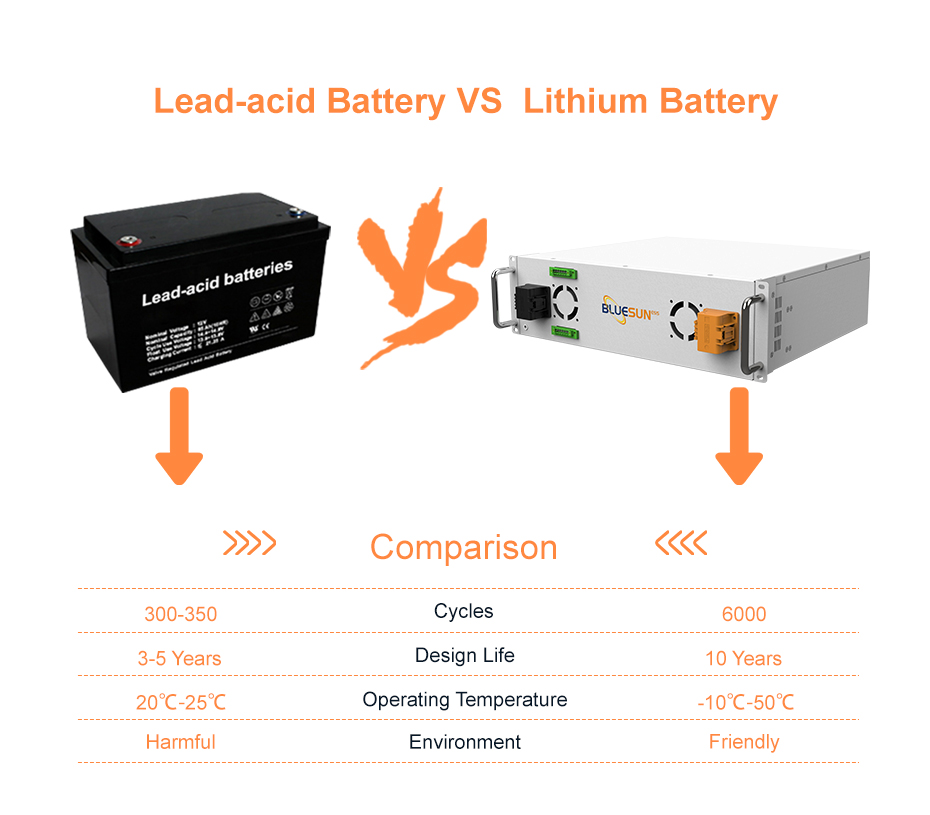
When selecting energy storage solutions for Battery Energy Storage Systems (BESS), the choice between Lead-Acid and Lithium-Ion batteries is crucial. Both technologies have unique advantages, making them suitable for different residential and commercial needs.

Advantages:
Cost-Effective: Lead-Acid batteries are cheaper upfront, making them ideal for budget-conscious residential setups.
Proven Technology: Reliable and widely available with a long history in energy storage.
Drawbacks:
Lower Energy Density: Larger and heavier, requiring more space.
Shorter Lifespan: Typically last 3–5 years, leading to more frequent replacements.
More Maintenance: Require regular upkeep, including electrolyte checks.

Advantages:
Higher Energy Density: More compact and efficient, saving space in both residential and commercial BESS.
Longer Lifespan: Lasts 10–15 years with minimal maintenance.
Better Efficiency: Faster charging and higher performance, especially for commercial applications.
Drawbacks:
Higher Initial Cost: More expensive upfront, though they offer better long-term value.
For residential systems, Lead-Acid may be a budget-friendly option, while Lithium-Ion offers a more sustainable, efficient solution. For commercial BESS, Lithium-Ion is generally the better choice due to its scalability and low maintenance, despite the higher upfront cost. Your choice depends on your specific needs and long-term goals.